Helsinki Central Library Entry by Team HELLO WORLD!
By Bustler Editors|
Wednesday, Nov 28, 2012
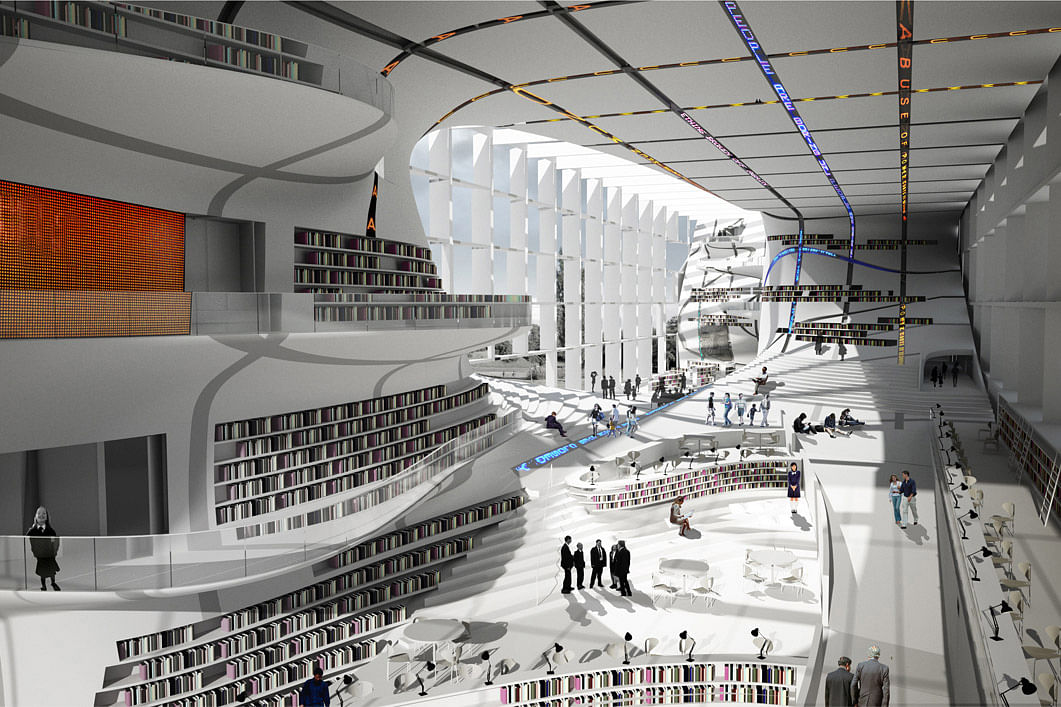
Related
As part of our mini series of Stage 1 proposals submitted to the Helsinki Central Library competition, here is the entry by Viennese team HELLO WORLD!
Project Description by Team HELLO WORLD!:
Information becomes increasingly accessible, but also overwhelmingly delocalized. How to organize this dimensionless and ubiquitous flow of data to make it useful? Paradoxically, an example from the pre-Gutenberg era may provide a solution, using one of our most developed faculties – spatial memory.
Prior to the invention of press, long speeches were remembered as virtual “Memory palaces”. Their various spaces related to various arguments, interior elements could link to examples etc. We propose to actualize such a palace in the memorable space of Helsinki's Central Library. We propose to link various specific spaces and different media through a connecting “Information Landscape”.
The high ambition of the Library is a bet on the importance of place for the transformation of information into knowledge, a bet on the importance of localized access for the expansion of memory. In fact, in any medium, a clear and memorable localization of information elements may lead to novel ways of linking them to create a new edifice of knowledge. By suggesting to locate fiction or science books, recordings or video in precise spots on a continuous but finely differentiated landscape, we believe to bind the spatial experience of visitors to the information content of the media, all exposed and embraced in a visual entirety.
The project follows a lineage of library designs showcasing various book formations directly from main reading spaces. From Boullee's central reading room surrounded by ascending rows of books under an immense vault through OMA's creased and folded bookplates at Jussieu and Qatar, we continue a path of exploration in using books as a material for spatial definition. The proposal folds books around a fluid reading field.

1.0 ACCESS AND ORIENTATION
On the south end of the library, the visitor entering from the park or from the center is drawn into the major space that will cross the entire building diagonally. Walking on the landscape, he will be able to access all the programs on the “other side”. Near the entrance, the surface contains information panels showing current events. Beyond the info point, an opening leads to the cinema, cafe and multipurpose hall, while gently sloping ramps and stairs take the visitor past a series of terraces for reading along a wall of bookshelves. Once at the top of the landscape, views open towards the northern body of water, with Finlandia Hall in the distance. The diagonal view echoes Aalto's fanning out master plan for the area.
The central space with main reading spaces and bookshelves following the contours of the topography links directly to other areas, represented visually: to the south-west, expositions can be visited behind exhibition panels advertising ongoing shows; towards the north, teaching and office areas are accessed on a balcony with rows of textbook references; climbing the topography up (or taking a lift), the generous area of the children's world with its events and playgrounds lurks behind a game area and a landscape full of children's books; finally, a smooth descent lands the reader in an amphitheater of bookshelves linked to the park, a book-bar on the frontier to the book delivery service, and the northern entrance.
Floating above the landscape and closing the circulation loop is a partly cantilevered bridge with lounges, saunas and a restaurant on one end and staff offices with meeting rooms on the other. Partial access to a roof atrium, as well as views open to the media landscape below and natural landscape beyond are provided through the structure of the bridge's beams.
At all times, a direct link between the park and Töölönlahdenkatu remains open below the ascending landscape to access the multipurpose hall, the cinema underground and their respective foyers, with a cafe spilling out into the park. Lift connections to offices and public program in the top beam are provided.
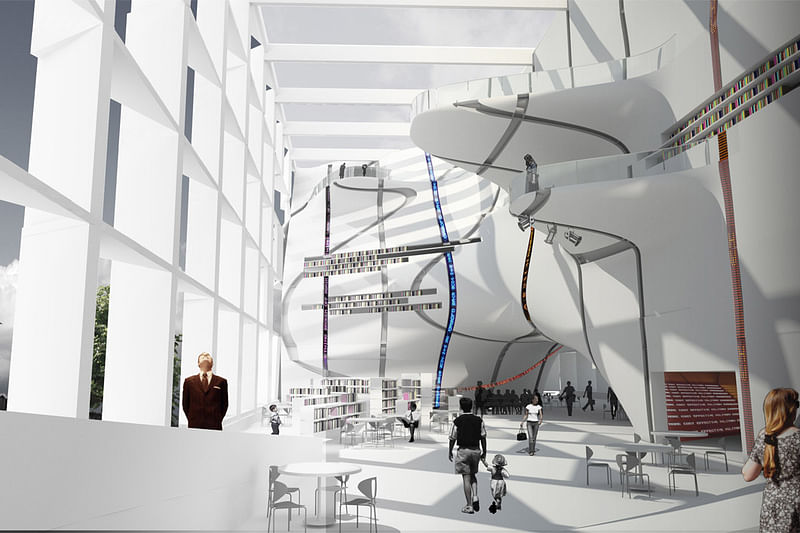
2.0 MEDIA STRATEGY
The information landscape thus creates an organizational and perceptual backbone to the project. It is made out of various wood types, including its structure to the fullest extent possible. Its modular panelling permits to include various media on its surface. Therefore, the interactive spaces may project games in real time to portions of it, and play movies on the others, while the gaps between the panels contain the book classification system or run latest news on led-displays. Based on a changing proportion of books, portions of the landscape may be reprogrammed to contain more screes, or store electronic devices to be borrowed out. Some zones may be occupied by clouds of related book material changing often, while others stay in a more permanent – and memorable – configuration.
This meandering library topography exerts a visible influence on the otherwise compact boundary within which it is enclosed. The diagonal views from Töölönlahdenkatu inside and from the library out towards the north-west deflect the facade elements and modify their depth and transparency. Main reading spaces therefore receive diffuse northern light and have a visual link to the park and water. The deflected solid surfaces of the western facade and the roof above the reading rooms include photovoltaic panels.
Urbanistically, the media landscape is an extension of the park landscape in front of the library. It invites patrons inside, transports them in a smooth twist higher up to land them back in the park in a diagonal, dramatic promenade evolving from an introductory spatial compression to the diagonal fanning out of views towards the surroundings on the top and a centripetal compression in the book amphitheater at the other end. Towards the park, the building appears as an abstract boundary, where the varying orientation and proportion of glass and photovoltaic panels creates a scintillating play of reflections and transparencies, partially exposing the enticing interior spaces of the central library.
Project Details:
Location: Helsinki, Finnland
Site Area: 4,500m2
Area: 15,500 m2
Year: 2012
Authors:
Mark Balzar / Architect Vienna
Bence Pap / OnA Design Studio, Vienna
Peter Stec / Architect Vienna – Bratislava
Collaborators:
Anna Psenicka / OnA Design Studio, Vienna
Miro Straka / Bratislava
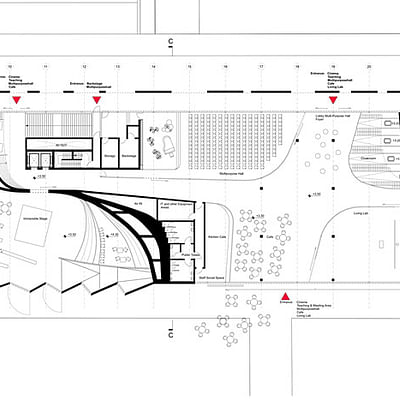
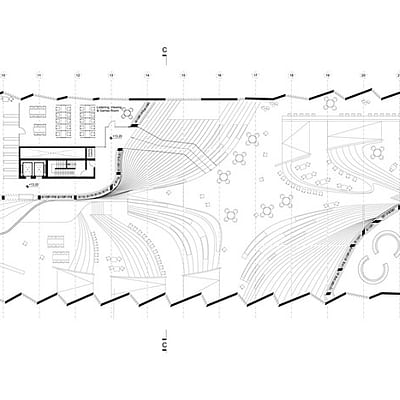
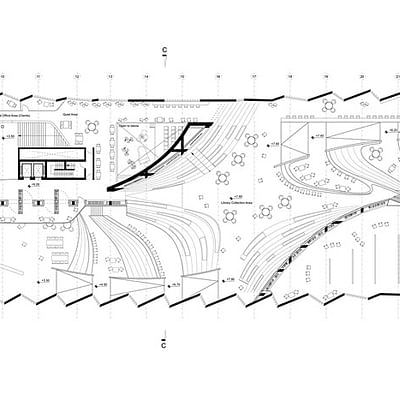

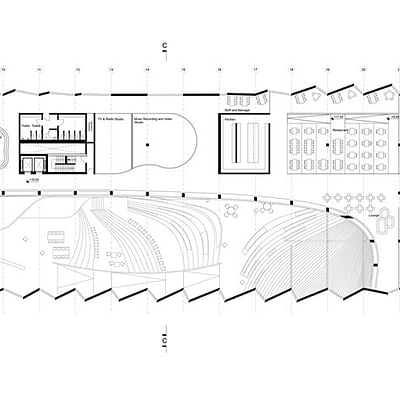
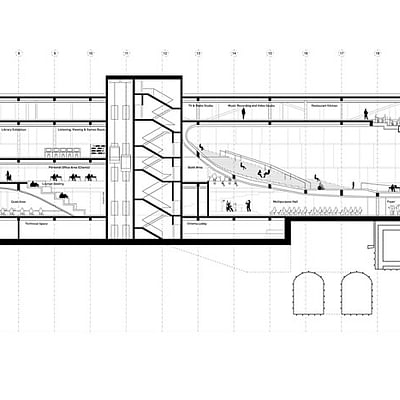

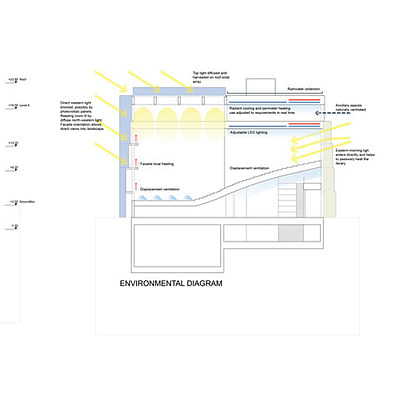

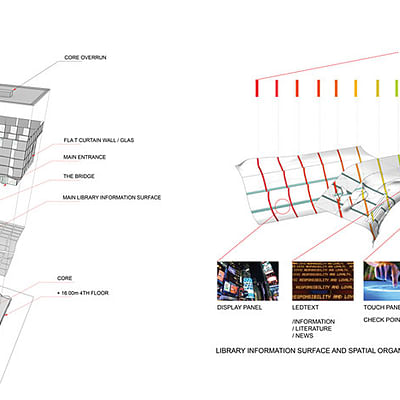
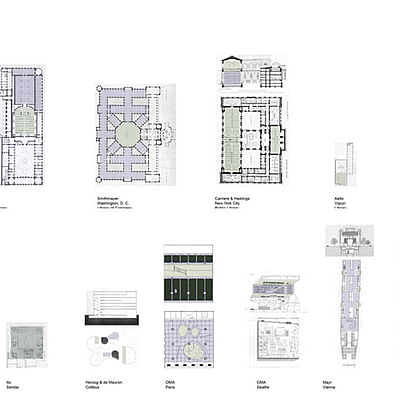

Share
0 Comments
Comment as :